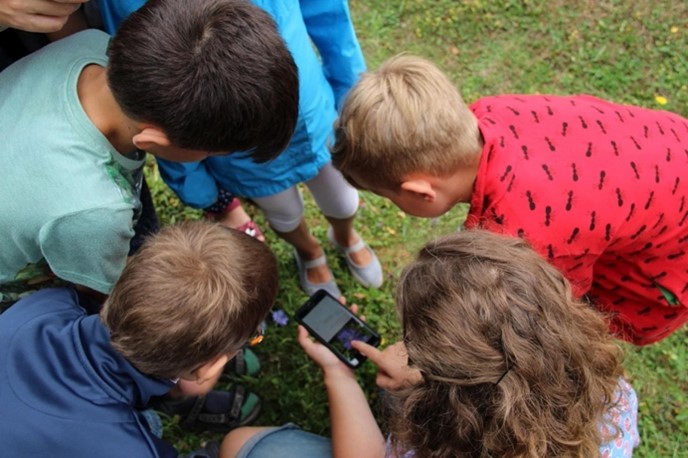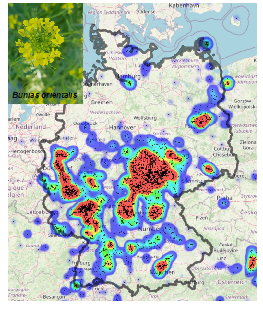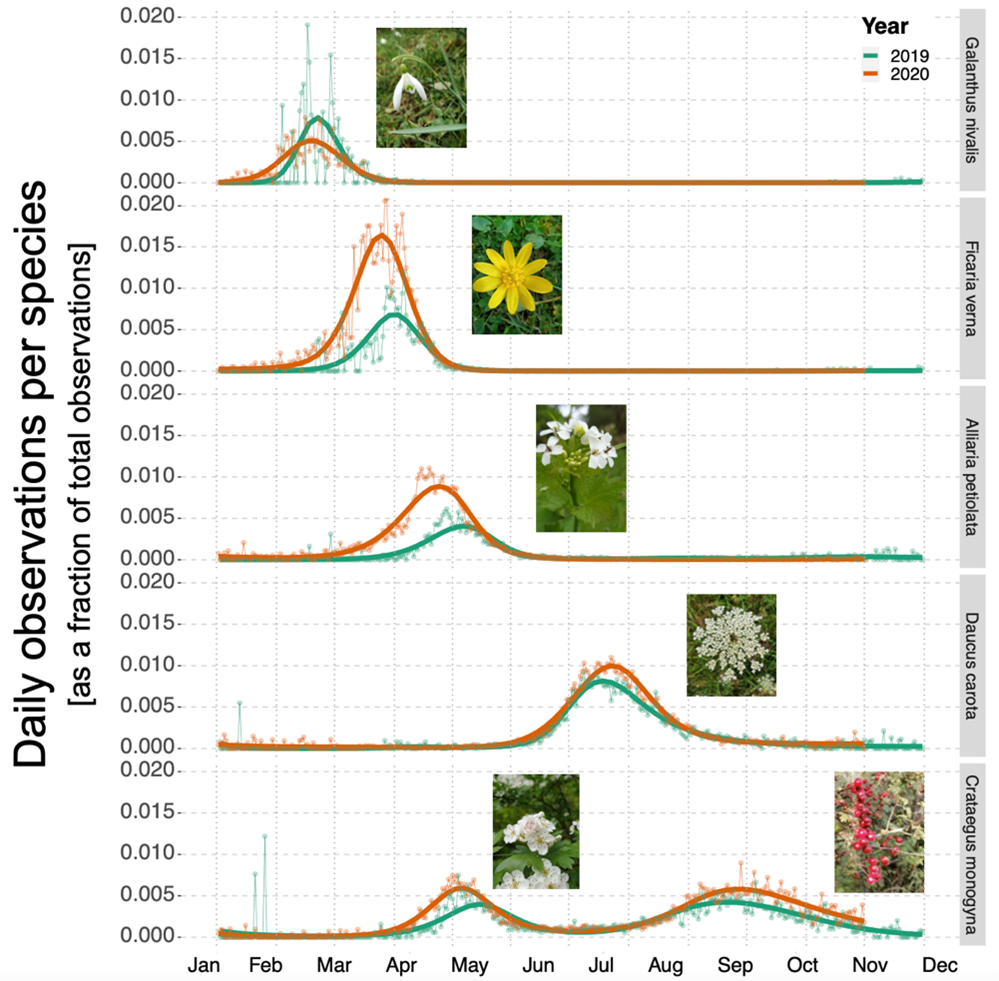Post provided by Michael Rzanny & Jana Wäldchen
Species identification is an essential tool for recording biodiversity, especially in an era of habitat loss and climate change. Developing skills to correctly identify plants to a species or even a genus level can take many years of training, but a new app called Flora Incognita aims to empower citizens with botanical expertise while also collecting data for scientific analysis.
In this blog post, Michael Rzanny and Jana Wäldchen reveal the inspiration behind this new app and discuss highlights from their new paper “The Flora Incognita app – interactive plant species identification” recently published in Methods in Ecology & Evolution.
On a warm summer night in 2011, glowing lights danced in the night sky, as Jana Wälchen and two of her colleagues looked up through a constellation app to learn more about the beautiful stars above. In those moments an idea sparked: wouldn’t it be great if other things could be explored through a mobile phone? How about… plants?
Jana reflects “I wondered if it was not possible to simplify plant identification and thus make it accessible to everyone. I started reading scientific studies and quickly realized that they had been working on this for many years, but only in the field of computer science. The results were not very promising at that time. The scientists worked only with very small data sets and analysed images under artificial conditions, taken in the laboratory with a plain background – far from being applied in nature.” What started as a glowing idea, soon turned into a huge initiative with millions of contributors.
You protect what you know

The Flora Incognita App can be downloaded for free using Android, iOS, and Harmony OS, and currently has more than two million installations. Thanks to volunteers, the app is available in 19 languages so far. Users can snap pictures of plants with their smartphone, and if the object of interest is indeed a native wild plant, and the picture is sharp and focused on the right aspect, then the user not only gets a correct identification (83% on internal test dataset) but also an in-depth fact sheet that shares additional information about the species.
Interdisciplinarity as a concept for success
The scientists working in the Flora Incognita project come from different thematic fields including biology, ecology, and computer science, each bringing their own expertise to the research project. Within the framework of the project, we conducted various scientific studies which ranged from systematic and species group-specific definition, evaluating complementary image perspectives, using location information and its evaluation with regard to habitat suitability for all supported plant species, and establishing a citizen science project for targeted collection of high-quality and reliable training data for a wide range of intake situations. All this work ultimately resulted in the Flora Incognita App.
Gathering data on species distribution
More than one million users have generated over 32 million observations since 2018. So, Jana’s initial plan to make plant species identification accessible to anybody, anywhere has already succeeded. But there’s more to Flora Incognita than training people to look closely and recognize species-rich meadows or diverse lean habitats.
These observations are collected for use in scientific work and not only provide one or multiple pictures of an individual plant, but come with a GPS location and time stamp. This huge amount of real-time data is a cornucopia of possibilities when it comes to data analysis.
Patrick Mäder, project lead, reflects: “What started as computer-science-driven innovation is now a perfect example of “The result is more than just the sum of its parts”. Our image-based species identification approach is based on state-of-the-art deep learning, and we trained our algorithms based on real-word applications with botanist experts. This is how we ensure that science, technology, and practical use are not mutually exclusive, but rather offer combined added value for all users and scientists involved.”
Documenting visible biodiversity change
We wanted to visualize how plant species distribution changes from year to year and document the spread of invasive species to native habitats, which could help increase environmental awareness and subsequent conservation actions. Having information available in real-time and on large scales could allow for a much earlier, faster, and decentralized approach to protecting native habitats from intruding species.

We also wanted to know what biodiversity means for society, from lay people to experts. App users record what they see and we are then capable of providing necessary information to raise awareness for protecting nature in their local environment. Interestingly, our data shows that when in a spruce forests our app users predominately record fox gloves (Digitalis purpurea), although spruce (Picea abies) is naturally the predominant species. Conspicuous and widespread species are recorded the most often, and we get feedback from users that after using Flora Incognita for some time they are astonished by the diversity that they find in their neighborhood.
Flora Incognita uses plant identification algorithms trained with more than one million images to identify a species, but geolocation plays a role in refining the result. Combining this information we gather valuable data that can be used to answer phenological questions, including patterns of flowers blooming across regions and the timing of fruit development in different locations. These markers of change, year over year, can help farmers to work more efficiently with nature and contribute to our understanding of climate change.
In our paper “The Flora Incognita app – interactive plant species identification” we explain how Flora Incognita works, how the identification process comes together, and present the potential of gathered data for various applications to protect biodiversity.
If you are interested – why don’t you download the app yourself? The more data, the better the analysis!



One thought on “Flora Incognita – more than just a plant identification app”